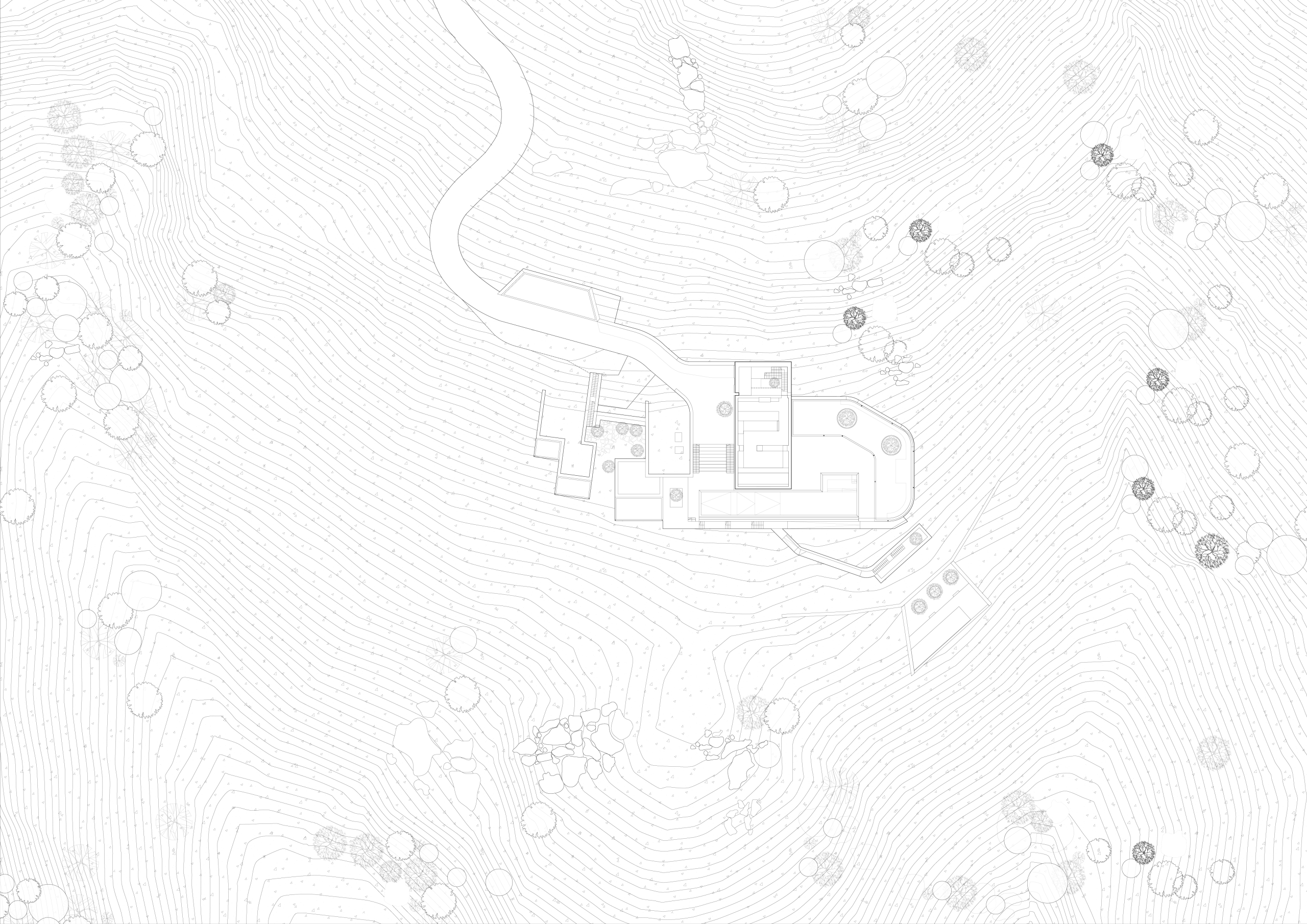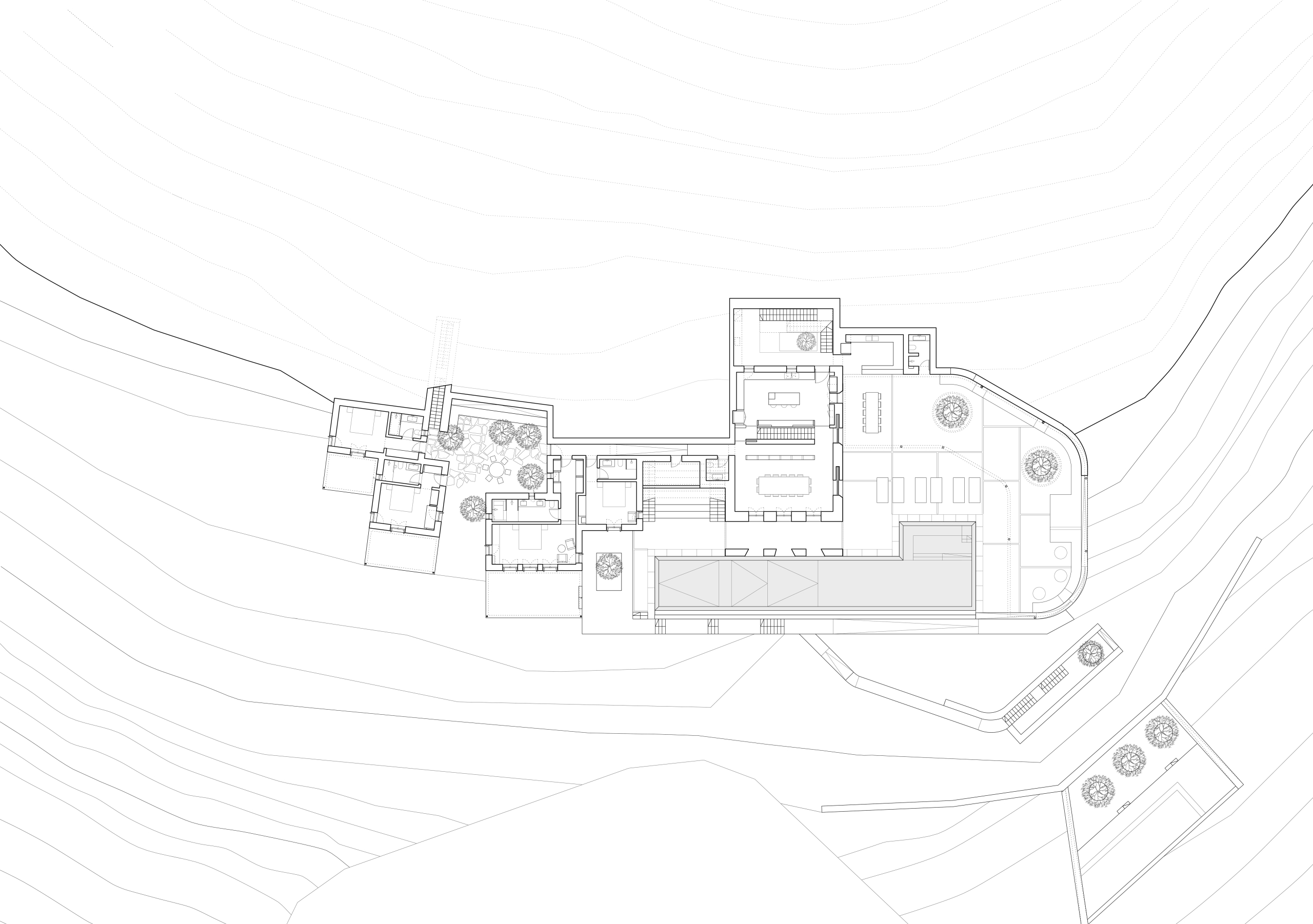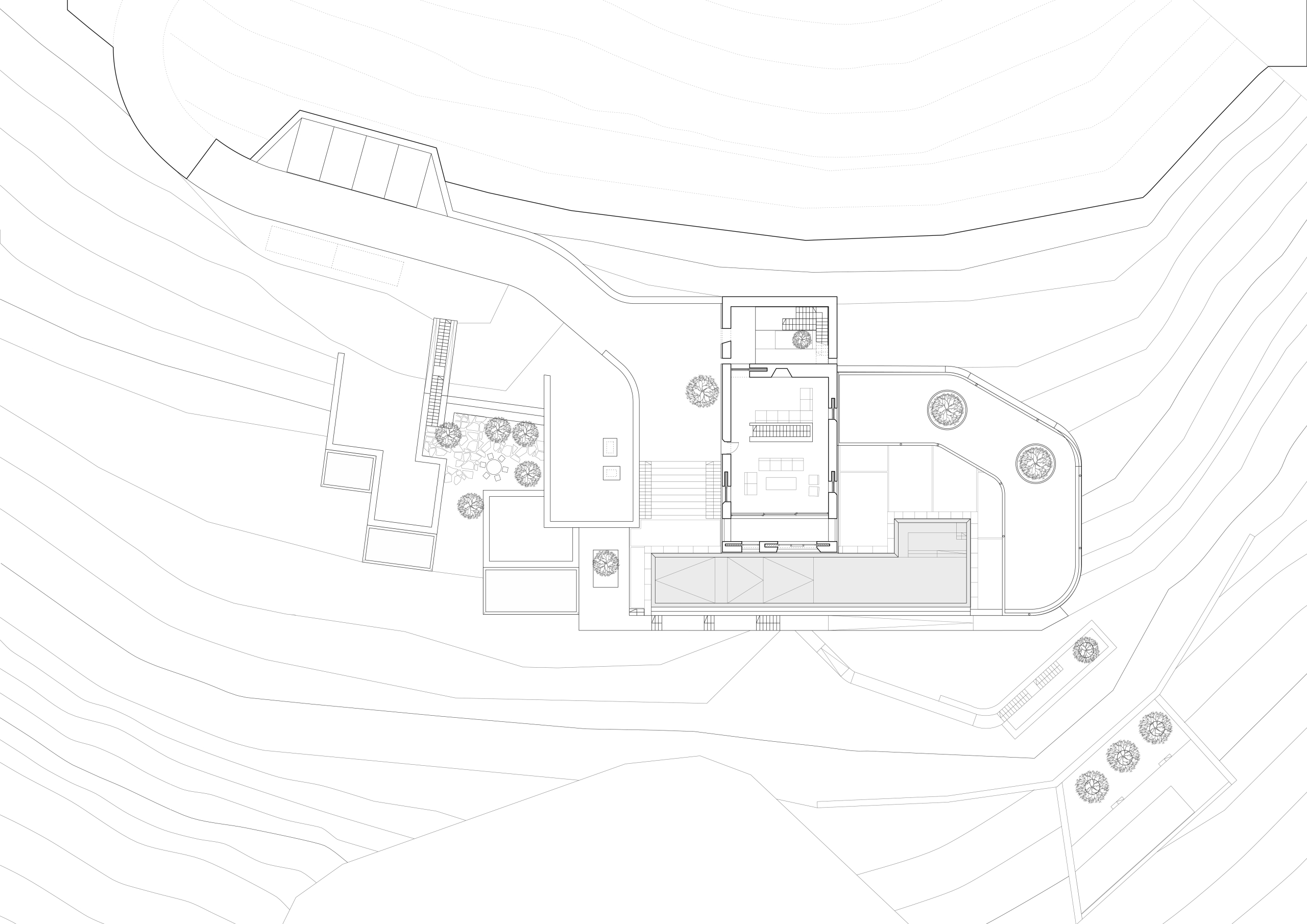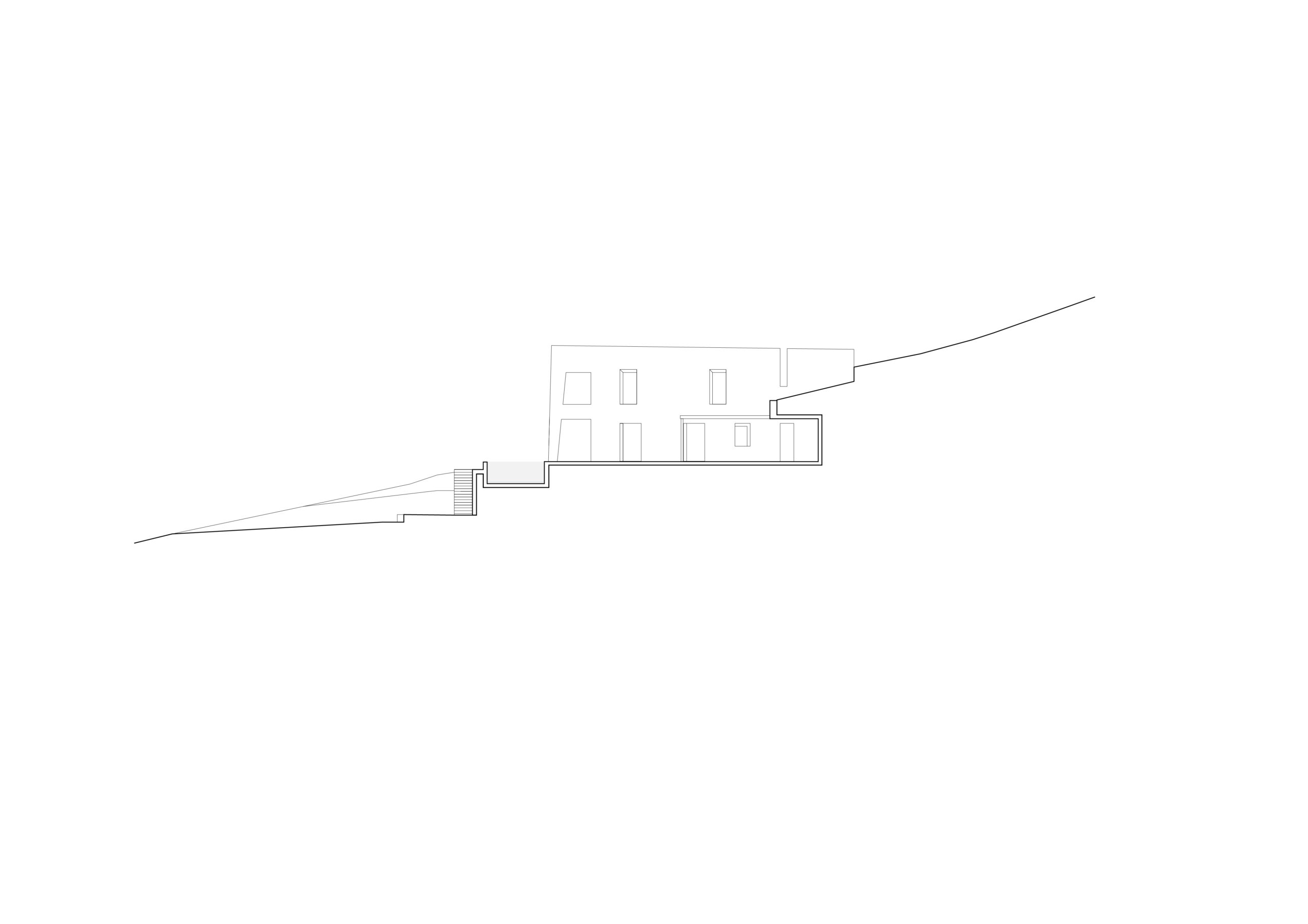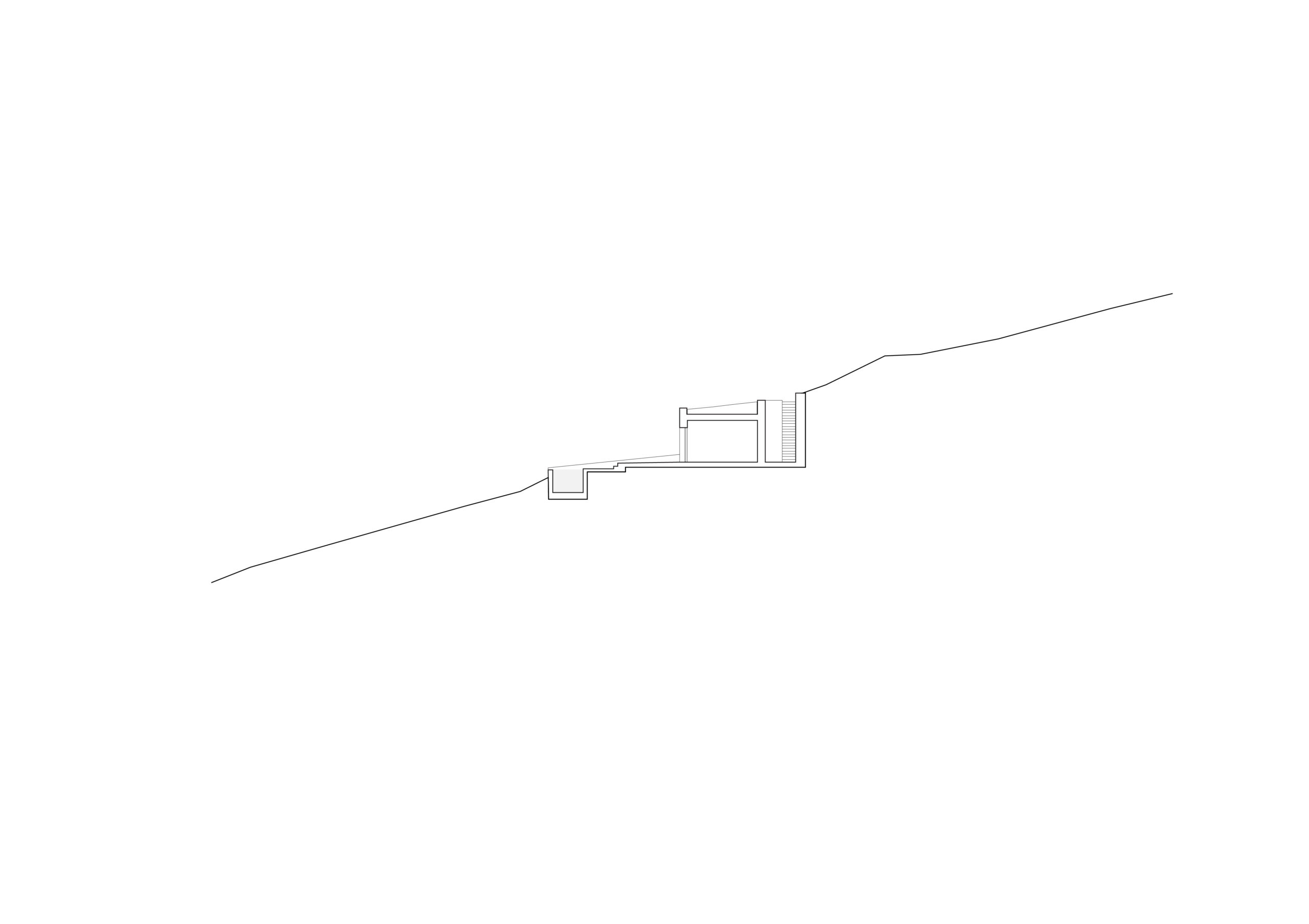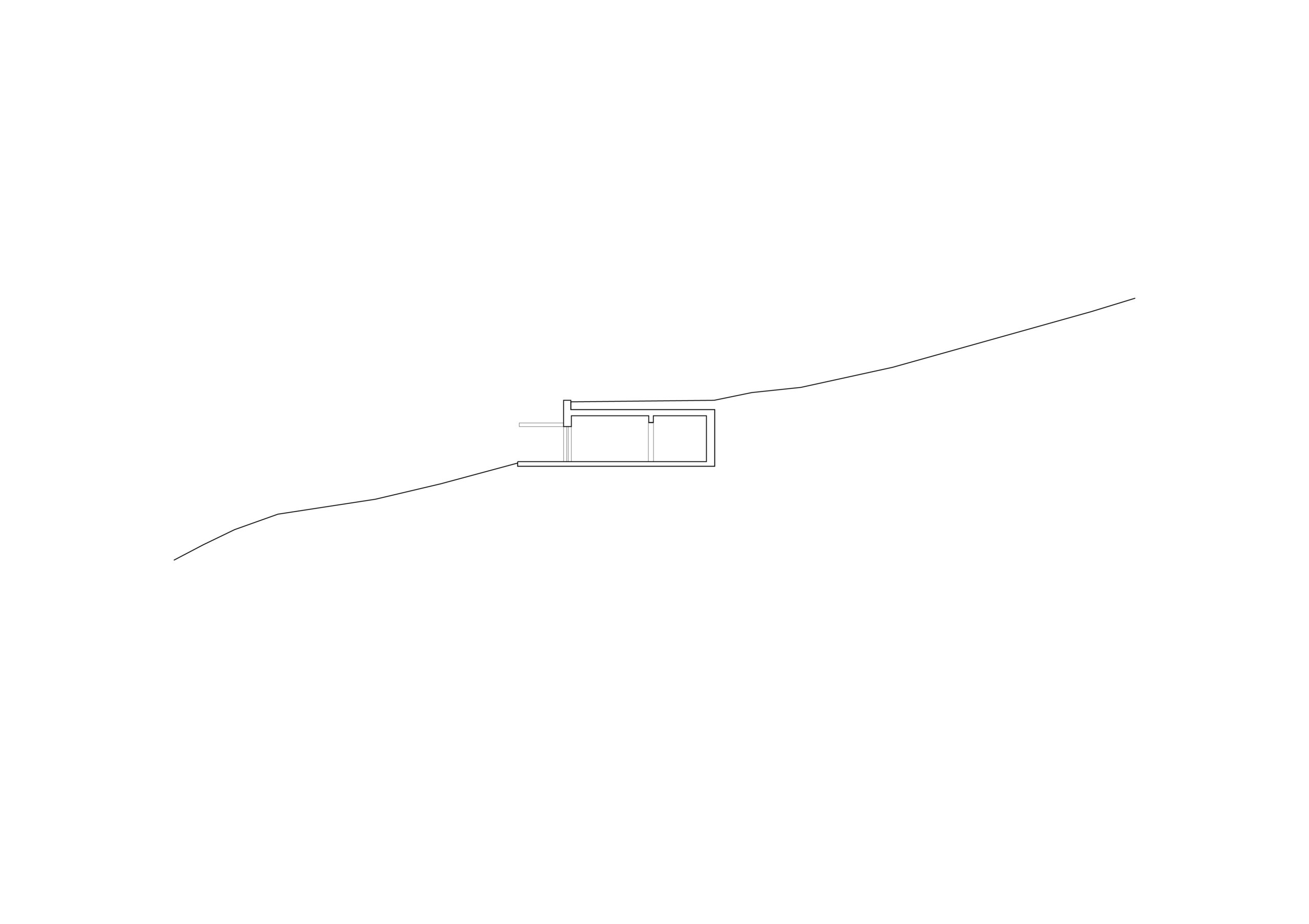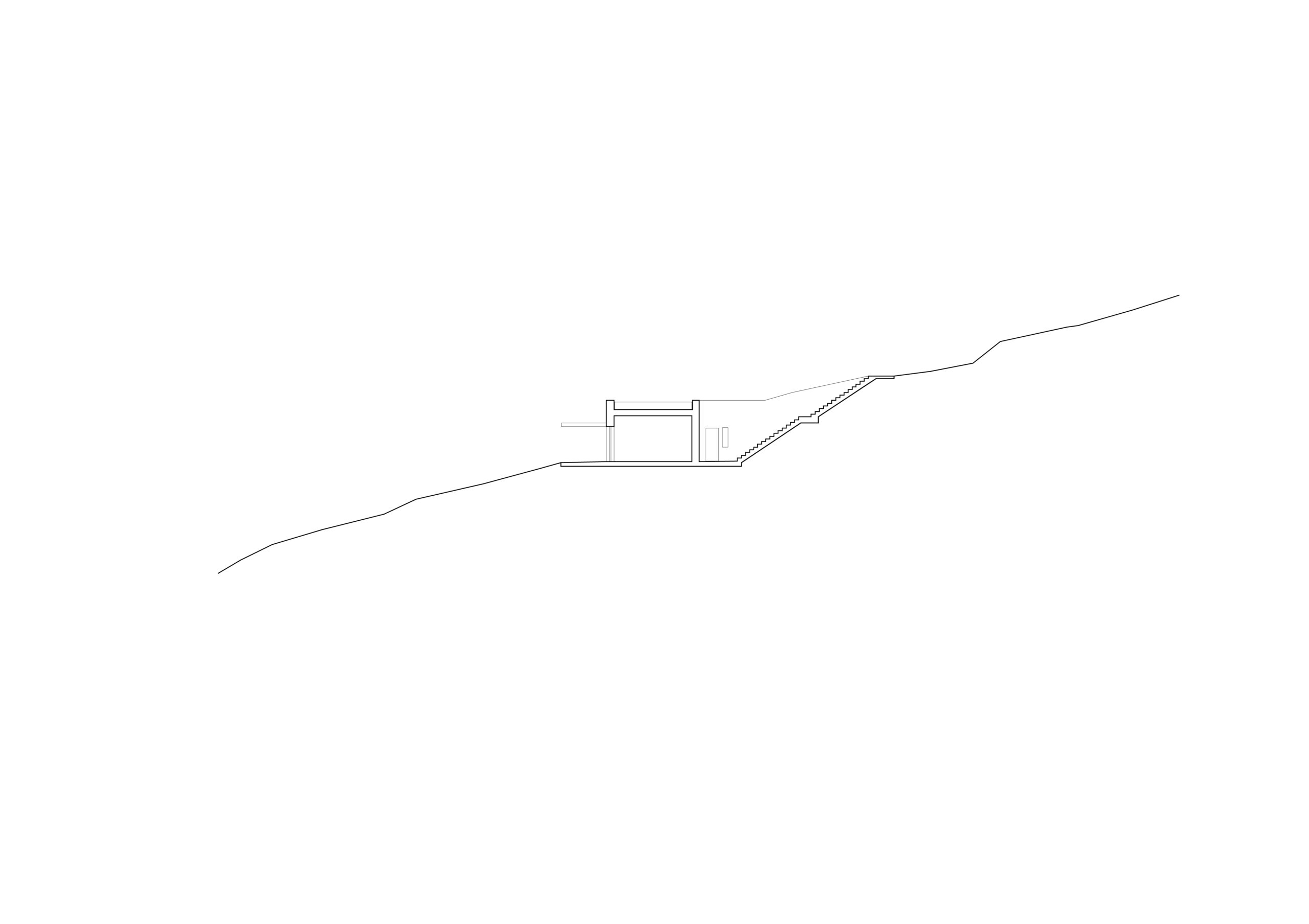Avlakia House is situated between two gorges (avlákia in Greek) on Antiparos island, Greece. It benefits from views of the Cycladic archipelagos in the west, but faces exposure to the northern winds. The brief requested for a rather large program: the main house and a guest house of seven bedrooms in total, two pools, generous exterior areas, and substantial areas of support.
Avlakia looks deceptively small from afar because most of it is hidden underground and built with local stone. A hybrid between a building and an earthwork, the house’s form, deciding what to reveal and what to hide underground was a balancing act between the human experience, environmental, and cultural preservation.
The intention was to preserve the immediate topography and the cultural, ecological landscape of the broader Cycladic region. Emerging from the landscape in the form of a stone retaining wall, Avlakia House appears to be a monumental volume resting on a stone retaining wall. Specific formal operations – proportions, inward inclinations and repetition of openings – reflect the site’s relation to the sun and transform the white box into a sculptured building, a Cycladic temple. The white monolith and an organically-shaped pergola host the public areas. Meanwhile, subterranean stone volumes comprise the bedrooms and wrap around a courtyard in a village-like arrangement. The amphitheater acts as a viewing platform, with its only purpose being to “take in” the rest of the site.
The project draws on the vernacular building tradition, while elevating spaces into new contemporary forms. Sourcing local materials, such as stone and marble, working with local crews, and reenacting craftsmanship traditions, like terrazzo floors, contribute to the site’s social, cultural, and environmental sustainability. Thick natural shading, thermal insulation without bridges, and maximizing solar energy reduce the building’s overall energy consumption. Planted roofs, courtyards, and cross-ventilation strategies contribute to the interior climate of the house and relieve it from the need for powerful cooling systems.
